The time has come for some pandi curry on this blog. My apologies to those who’ve been coming here, looking for the classic Kodava pork preparation, only to go away with an empty plate. I must admit I was holding out, because I really didn’t want you to think that that’s all there is to Coorg food! If I had a dollar for every time someone has said to me “Coorg? Mmm… pandi curry!” or Homer Simpsonesque words to that effect, I’d be well placed to buy a few winters worth of…er…pork.
To make amends for the delay, here are two recipes!
Probably the definitive dish when it comes to Kodava cuisine, pandi curry has earned its chops as one of the tastiest ways to prepare pork, or wild boar – as it was in another era. Everyone has their favourites, and I personally find some versions needlessly over spiced. So, first up, the recipe we most often use at home. The spicing is rich and dark enough to raise a gentle sweat, but, you’ll live to fight another day. It’s a more mellow version, and with more sauce, which can of course be dried out once the meat is cooked. As always, with pandi curry, the flavour improves with keeping, so make this at least a day or two before you plan to eat it. If you don’t eat pork, try this recipe with duck, preferably with a good amount of fat.
Pandi Curry
Pork in a dark, spicy sauce
- 1 1/2 kg pork, with fat and skin (some bone in if possible) cut into 1″- 2″ pieces. For a succesful pandi curry, you must ideally include a good portion of fat. Try a mix of pork belly and shoulder cuts
- 1/2 –1 tbsp chilli powder, or to taste (reduce chilli powder and increase pepper in the roasted spice mix for a more warming version)
- 1 tbsp turmeric (less if the turmeric is strong)
- 2 tbsp freshly grated ginger, ground to a paste
- 10 -12 cloves of garlic, ground to a paste
- A pinch of salt
Separately roast the following:
- 2 tbsp coriander seed
- 1 tbsp mustard seed
- 1 tbsp cumin
- 1 tsp peppercorns
On medium-low heat, roast each of the spices in a heavy pan, taking care not to scorch them. The coriander and cumin should be an even, dark brown. This is key to developing the deep colour and flavour of pandi curry. Roast the mustard until it sputters, and very lightly roast the peppercorns. Cool, then finely powder all the spices together.
Marinate the pork in the ingredients in the first group for at least half an hour. You can add the roasted spice powder to the marinade, or braise the meat in it briefly, before the hot water goes in.
- 2 – 3 medium onions, finely sliced, or chopped
- 2 – 3 green chillis slit
- 2 tbsp oil, or use a nice bit of fat, separated from the pork
- 1 tsp kachampuli*. (Always use less than you think you’ll need, and add more if required)
- Salt to taste
In a deep pan, kadhai, or wok, heat the oil (or fat) and fry the green chillis and onions until soft and translucent. Add the marinated pork, and stir well to mix. Add some salt and fry for 8 – 10 minutes, till the masala no longer smells raw, and the pork is dry. If you haven’t added the roasted spice powder, add it now, and stir to mix.
Add 2 – 3 cups of hot water, or enough to half cover the meat. Use your judgement, since some meat can release a fair amount of liquid when cooked. Bring to a low boil, stir thoroughly to mix, then cover and cook on low heat, stirring occasionally, until tender. Check for salt before the meat is completely cooked.
Add the kachampuli and simmer for a couple of minutes.
Best eaten with kadambuttus and a clear conscience.
The second version is similar, but with more varied spices, and a slightly different sequence of cooking. It makes a kind of dry braised dish. This is definitely one for those who like it spicy!
Pandi Curry 2.0
- 1 1/2 kg pork, with fat and skin (some bone in if possible) cut into 1″- 2″ pieces
- 1/2 –1 tbsp chilli powder, or to taste (reduce chilli powder and increase pepper for a more warming version)
- 1 tbsp turmeric (less if the turmeric is strong)
Grind together:
- 2 tbsp freshly grated ginger
- 10 – 12 cloves of garlic
- 3 – 4 green chillis, or to taste
- 1 cup “sambar onions”, or finely sliced shallots
Rub the turmeric and red chilli powder into the pork, then mix in the ground ginger garlic mixture, and a pinch of salt. Set aside for 1/2 hour.
Separately roast the following:
- 2 tbsp coriander seed
- 1 tbsp mustard seed
- 1 tbsp cumin
- 1 tsp peppercorns
- 1/4 tsp fenugreek seed
- 2 – 3 cloves
- 1″ stick cassia
Prepare as in the previous recipe, with the coriander and cumin roasted dark, and the remaining spices more lightly.
Grind together to a fine powder.
Place the marinated pork in a deep pan, kadhai, or wok, add one cup of hot water, cover and cook until tender. Add small amounts of water if it looks like it’s drying out before its cooked. Add salt to taste before the meat is fully cooked.
Add 1 tsp kachampuli, and cook on low heat for a few minutes, then add 2 generous tbsp of the roasted spice masala and cook till dry.
Serve as usual, with kadambuttus, wedges of fresh, fragrant limes, and and an air of well being.
* Read notes on kachampuli substitutes here.

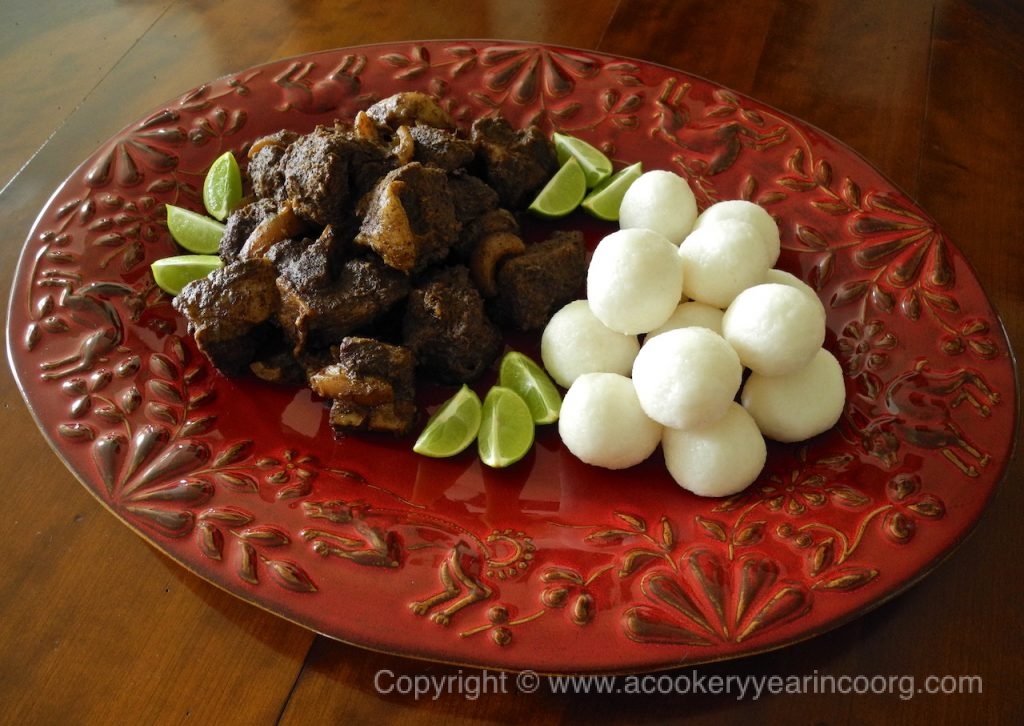
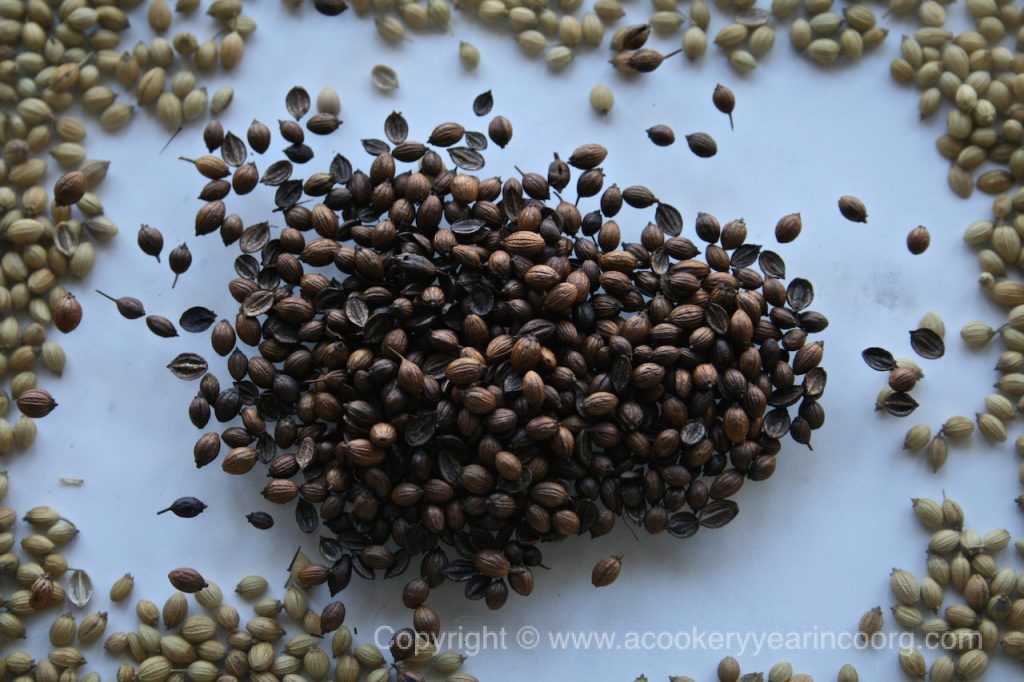
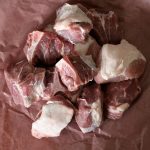
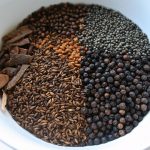
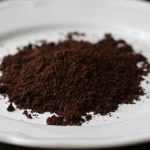
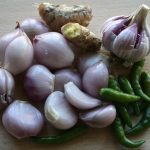
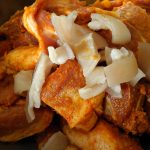
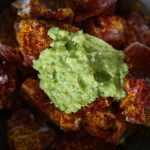
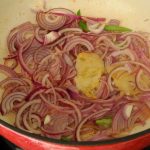
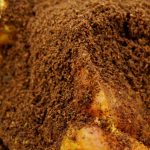
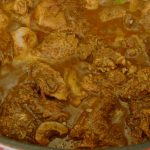
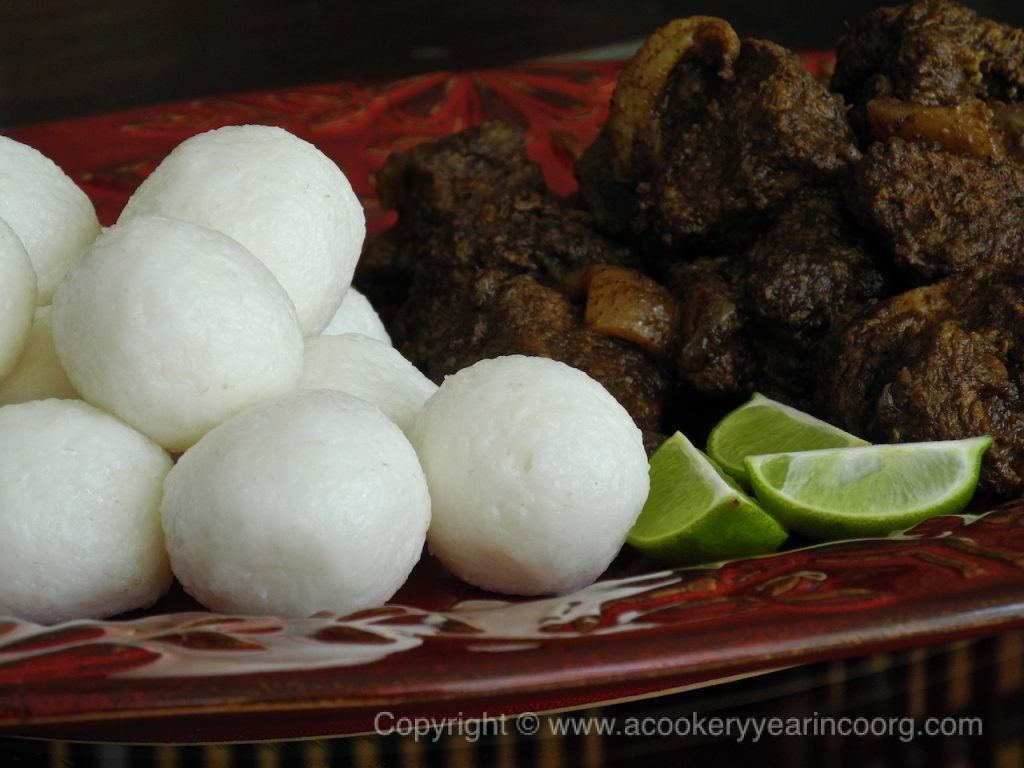
Hog Heaven… I’m in heaven,
And my heart beats so that I can hardly speak.
And I seem to find the happiness I seek.
To dig into this is heaven and I know Mr Irwing (RIP) will forgive me for kind of butchering his music. No wonder Pandi is such a term of endearment in the house , not to be earned easily , on little slip up and they wont be calling you that with all the love in the world. I have always wondered how one can make a dish so magical in taste and yet so easy to put together . It has to be the spices and that fine elixir . So thank you for sharing this . It tastes like no other dish .I turned veg some years back,but will at least taste a bit if it is on the table , somehow seems a sacrilege to not do so . The pics showing the recipe stepwise are as usual spectacular..and very helpful. You dont leave anything out ever Shalini… the lime wedges , so thanks for that . Any particular reason as to why there is Cassia and cloves in the second ? I am very much a novice wrt cooking Coorg food. The first time I had Pandi Curry, I was mesmerised by the lovely dark brown colour and the aroma. A new bride had to try so hard not to make a complete pig of myself at a this one And Cheers with a tot of Old Monk 🙂
I’m mighty tempted to add a line involving dining on pork cheek, but I shall desist 😉
Thank you Jyoti, I’m no pro, but I do love my food, and what goes into the making of it- always have!
Pandi Curry is special.And simple as it is, it always turns out just a little different in the hands of individual cooks.I’m sure your Mil has a version too.That basic kartha masala (black masala) can have variations based on personal tastes, and I think the first time my mother made a note of the cloves and cassia in a recipe was when she was dealing with the professional “wedding house cooks”, many years ago.You can add a little to the first version too. We have some sensitive stomachs in the household, and that first version is one that sits lighter in the stomach.
I love my pandi curry with a good squeeze of lime over it- it just perks it up to porky perfection.
Something tells me that the new bride made a very good impression, Old Monk and all!